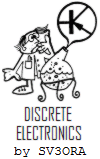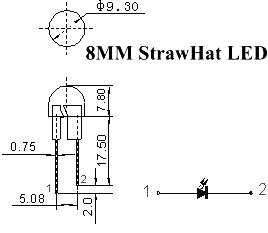
Solid state PCB exposure
by SV3ORA



| Specifications | ||
|
Absolute Maximum Rating (Ta = 250C)
|
PARAMETER |
MAXIMUM RATING |
UNITS |
|
DC Forward
Current |
100 |
mA |
|
Peak Pulse
Forward Current (1) |
150 |
mA |
|
Avg. Forward
Current (Pulse Operation) |
100 |
mA |
|
Operating
Temperature |
-40 to +100 |
0C |
|
Storage
Temperature |
-40 to +120 |
0C |
|
Lead Soldering
Temperature |
2600C
for 6 seconds |
|
(1) Pulse conditions of 1/10 duty and 0.1msec width
Electro-optical Characteristics (Ta = 250C)
|
PARAMETER |
SYMBOL |
CONDITIONS |
MIN. |
TYP. |
MAX. |
UNIT |
|
Forward Voltage |
VF |
IF =
100mA |
3.2 |
3.4 |
3.6 |
V |
|
Reverse Voltage |
VR |
IR = 100mA |
|
|
- |
V |
|
Dominant
Wavelength |
lD |
IF =
100mA |
|
400 |
|
|
|
Viewing Angle |
2q1/2 |
IF =
100mA |
|
140 |
|
Deg. |
|
Luminous
Intensity |
IV |
IF =
100mA |
- |
|
32,000 |
mcd |
